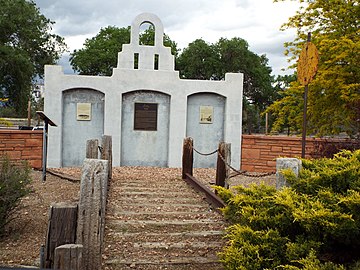Ash Fork | ||||||||||||||||
|---|---|---|---|---|---|---|---|---|---|---|---|---|---|---|---|---|
| Former ATSF station | ||||||||||||||||
 The Escalante, early 20th century postcard | ||||||||||||||||
| General information | ||||||||||||||||
| Location | Ash Fork, Arizona | |||||||||||||||
| Coordinates | 35°13′33″N112°29′17″W / 35.225828°N 112.488155°W | |||||||||||||||
| Owned by | BNSF Railway | |||||||||||||||
| Line(s) | Main Line (1882–1960) Santa Fe, Prescott and Phoenix Railway (Phoenix Branch) | |||||||||||||||
| Tracks | 2 | |||||||||||||||
| Construction | ||||||||||||||||
| Structure type | at-grade | |||||||||||||||
| History | ||||||||||||||||
| Opened | 1893 (first station), 1907 (second station) | |||||||||||||||
| Closed | 1905 (first station), 1969 (second station) | |||||||||||||||
| Former services | ||||||||||||||||
| ||||||||||||||||
Ash Fork Station is a former railway station of the Atchison, Topeka and Santa Fe Railway, located in Ash Fork, Yavapai County, Arizona. The large and "grand" Harvey House Escalante Hotel and restaurant were part of the station complex. [1]
Contents
Service to Ash Fork began in the early 1880s when the Atlantic and Pacific Railroad (predecessor of the Santa Fe) built through town, then in the Arizona Territory. After the completion of a line in 1895—the Santa Fe, Prescott and Phoenix Railway—to Phoenix, Ash Fork became an important junction point for the Santa Fe. [2]

